Jean-Baptiste Oudry
Paintings
Swan Attacked by a Dog
Greyhound in a landscape
Portrait of a Lady
The dog carring his dinner to his master
Three Dogs and a Macaw in a Park
The Lion and the Fly
Don Jose de Rozas y Melendez de la Cueva 1st Count of Castelblanco
Leopard in a Cage confronted by two Mastiffs
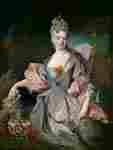
Mary Josephine Drummond Countess Castelblanco
Illustrations
Ragotin being treated with a Suction Cup
A hyena attacked by two dogs
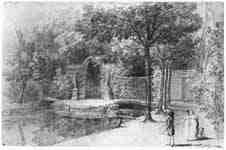
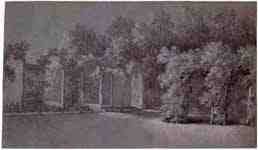
Overlooking a park spots with porch and lattice
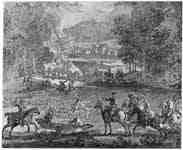
The death of the deer in the pond of Saint-Jean-aux-Bois
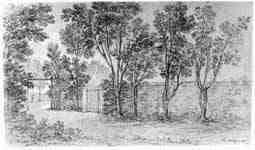
The wall of the park from Arcueil
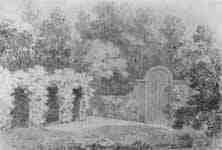
Fine Art Prints | Greeting Cards | Phone Cases | Lifestyle | Face Masks | Men's , Women' Apparel | Home Decor | jigsaw puzzles | Notebooks | Tapestries | ...
Jean-Baptiste Oudry (17 March 1686 – 30 April 1755) was a French Rococo painter, engraver, and tapestry designer. He is particularly well known for his naturalistic pictures of animals and his hunt pieces depicting game.
Biography
Jean-Baptiste Oudry was born in Paris, the son of Jacques Oudry, a painter and art dealer, and his wife Nicole Papillon,[1] relative of the engraver Jean-Baptiste-Michel Papillon.
His father was a director of the Académie de St-Luc art school, which Oudry joined. At first, Oudry concentrated on portraiture, and he became a pupil and perhaps a collaborator of Nicolas de Largillière from 1707 to 1712. He graduated at only 22 years of age, on 21 May 1708, at the same time as his two older brothers. The next year, he married Marie-Marguerite Froissé,[2] the daughter of a miroitier (a mirror-maker) to whom he gave lessons in painting.
Oudry became an assistant professor at Académie de Saint-Luc in 1714, and professor on 1 July 1717. He was inducted as a member of the prestigious Académie Royale de Peinture et de Sculpture in 1719, and was engaged as a professor there in 1743. After producing mainly portraits, Oudry started to produce still life paintings of fruits or animals, as well as paintings of religious subjects, such as the Nativity, Saint Giles, and the Adoration of the Magi.
In the 1720s Oudry was commissioned by Noël-Antoine de Mérou, director of the Royal Beauvais Tapestry Manufactory to create the designs for what has come to be one of the most iconic series of tapestries of the period. The series was called The Pastoral Amusements, or Les Amusements Champêtres.
Through his friend, Jean-Baptiste Massé, a portrait-painter and miniaturist, Oudry was introduced to the Marquis de Beringhen, hereditary master of the royal stables,[3] for whom he painted a pair of paintings in 1727,[4] followed by a suite of landscapes in the Flemish manner. Through this connection, he was commissioned to produce the painting that made his reputation, Louis XV hunting a deer in the Forest of Saint-Germain (1730; now at Toulouse). Subsequently he was commissioned to produce numerous works for the King, who was passionate about the hunt and appointed Oudry Painter-in-Ordinary of the Royal Hunt,[5] in which capacity he produced portraits of dead game, the day's kill. Oudry was granted a workshop in the Tuileries and an apartment in the Louvre.
M. Hultz, an adviser to the Académie de Peinture, commissioned Oudry to produce a buffet, or still-life combining silver plates and ewers, fruit and game; the work was exhibited in the Salon of 1737. Oudry timidly asked for ten pistoles for his work, but Hultz valued it much higher, insisting on paying twenty-five. Oudry was also commissioned to produce a buffet for Louis XV (exhibited in the Salon of 1743), that went to the château de Choisy, the King's favoured hunting residence.
Hultz recommended Oudry to Louis Fagon (1680–1744), an intendant des finances and book collector,[6] and Oudry decorated his houses in Vanves and Fontenay-aux-Roses with arabesques, flowers and birds. Fagon was charged with reviving the fortunes of the tapestry manufactory of Beauvais, which had flourished under Colbert, and he gave the task to Oudry and his associate, Besnier, in 1734. Oudry succeeded in his tasks, becoming wealthy in the process. His success at Beauvais led to a further appointment as inspector at the Gobelins manufactory in 1736, where his works were copied as cartoons for tapestries. Through most of the 1730s, he concentrated mainly on producing designs for tapestries, notably the nine Chasses Royales Gobelins series (1733–46), first woven for the Château de Compiègne (and reunited in Compiègne), for which the cartoons were later framed into the boiseries in an interior decor for Charles X at Fontainebleau, 1828.[7]
Oudry used a camera obscura in an attempt to speed up the process of producing landscapes, but abandoned it when he saw that the perspective and the effects of light and shade did not appear correct.
Although Oudry produced excellent scenes of animals and of hunting, he also painted portraits, histories, landscapes, fruits and flowers; he imitated bas reliefs in monotone tints en camaïeu, used pastels, and created etchings. He was often sent examples of rare birds to draw.
An important patron was Christian Ludwig II, Duke of Mecklenburg-Schwerin, who commissioned two pairs of paintings from Oudry: Three Does Watching Two Stags Fighting and A Family of Roe Deer; and A Boar Hunt and A Wolf Hunt, both delivered in 1734.[8] He later purchased a series of large paintings of animals from Louis XV's menagerie at Versailles. Oudry's initial motive for painting these works is obscure. When exhibited at the Paris Salon, they had been described as having been painted for the French king; however the commission seems to come through the king's surgeon, François Gigot de la Peyronie, who had engravings made after them,[9] and in a letter to Christian dated March 1750, Oudry wrote that they had become available for sale due to de La Peyronie's death. In addition to the portraits of the animals from the royal menagerie, Christian also bought Oudry's life-size painting of "Clara", an Indian rhinoceros which had been exhibited all around Europe to great public interest.[10] The works are still at Schwerin.
He turned down offers to work for the Czar Peter the Great and the King of Denmark, preferring to remain in France, where he maintained a large studio of assistants.
Oudry lost some of his responsibilities when Fagon was replaced by de Trudaine. He suffered two strokes in quick succession. The second left him paralysed, and he died shortly thereafter, at Beauvais (Oise). He was buried in the Church of Saint-Thomas in Beauvais. His epitaph on the stone was lost when the church was demolished in 1795, but was later found and placed in the Church of Saint-Étienne.
His son, Jacques-Charles Oudry, was also a painter.
Two exhibitions curated by Hal N. Opperman, first at the Grand Palais, Paris, October 1982 - January 1983, and then in a travelling exhibition in the United States, 1983, encouraged a reassessment of this purely French portraitist and genre painter.
References
Bryan,1886-9
Often incorrectly stated to be Froissié.
Jean-Louis Beringhen had been premier écuyer to Henri IV, and the post had descended in the family.
Sold in his posthumous sale, Paris, 2 July 1770.
Birmingham Museum of Art (2010). Birmingham Museum of Art : guide to the collection. [Birmingham, Ala]: Birmingham Museum of Art. ISBN 978-1-904832-77-5.
His library was sold at auction in 1744 after his death. "Catalogue des livres de feu M. Fagon, Conseiller d’Etat ordinaire, et au Conseil royal, intendant des finances. Dont la vente se fera en détail au plus offrant dernier enchérisseur Mercredi 5 Août 1744. & jours suivans, depuis deux heures de relevée jusqu’au soir en son Hôtel, ruë neuve des Petits-Champs". elec.enc.sorbonne.fr. Retrieved October 11, 2011.
H.N. Opperman, "The Genesis of the 'Chasses Royales'" The Burlington Magazine 112 No. 805 (April 1970:217-22).
Frank 2007, p.32
Bailey 2007, p.16–7
Frank 2007, p.37
This article is based on a translation of the equivalent article of the French Wikipedia, dated 2006-07-26
Sources
Bailey, Colin B. (2007). "“A long working life, considerable research and much thought”: An Introduction to the Art and Career of Jean-Baptiste Oudry(1686–1755)". In Morton, Mary. Oudry’s painted menagerie : portraits of exotic animals in eighteenth-century Europe (Issued in connection with an exhibition organized by the J. Paul Getty Museum in conjunction with the Staatliches Museum, Schwerin, Germany). ISBN 978-0-89236-879-2.
Frank, Cristoph (2007). "Pictorial relations:New Evidence on Jean-Baptiste Oudry and the Court of Mecklenburg-Schwerin". In Morton, Mary. Oudry’s painted menagerie : portraits of exotic animals in eighteenth-centuryEurope (Issued in connection with an exhibition organized by the J. Paul Getty Museum in conjunction with the Staatliches Museum, Schwerin, Germany). ISBN 978-0-89236-879-2.
----
Fine Art Prints | Greeting Cards | Phone Cases | Lifestyle | Face Masks | Men's , Women' Apparel | Home Decor | jigsaw puzzles | Notebooks | Tapestries | ...
----
Artist
A - B - C - D - E - F - G - H - I - J - K - L - M -
N - O - P - Q - R - S - T - U - V - W - X - Y - Z
Retrieved from "http://en.wikipedia.org/"
All text is available under the terms of the GNU Free Documentation License












